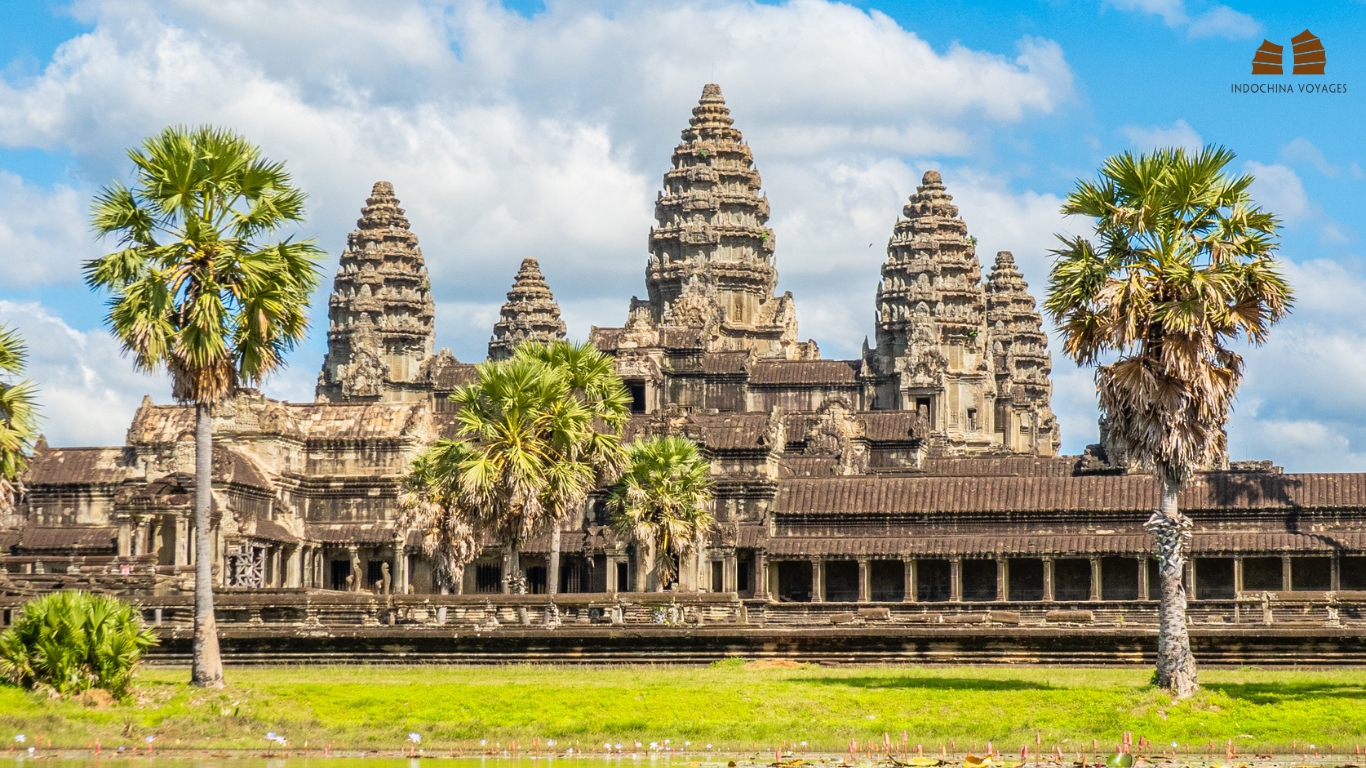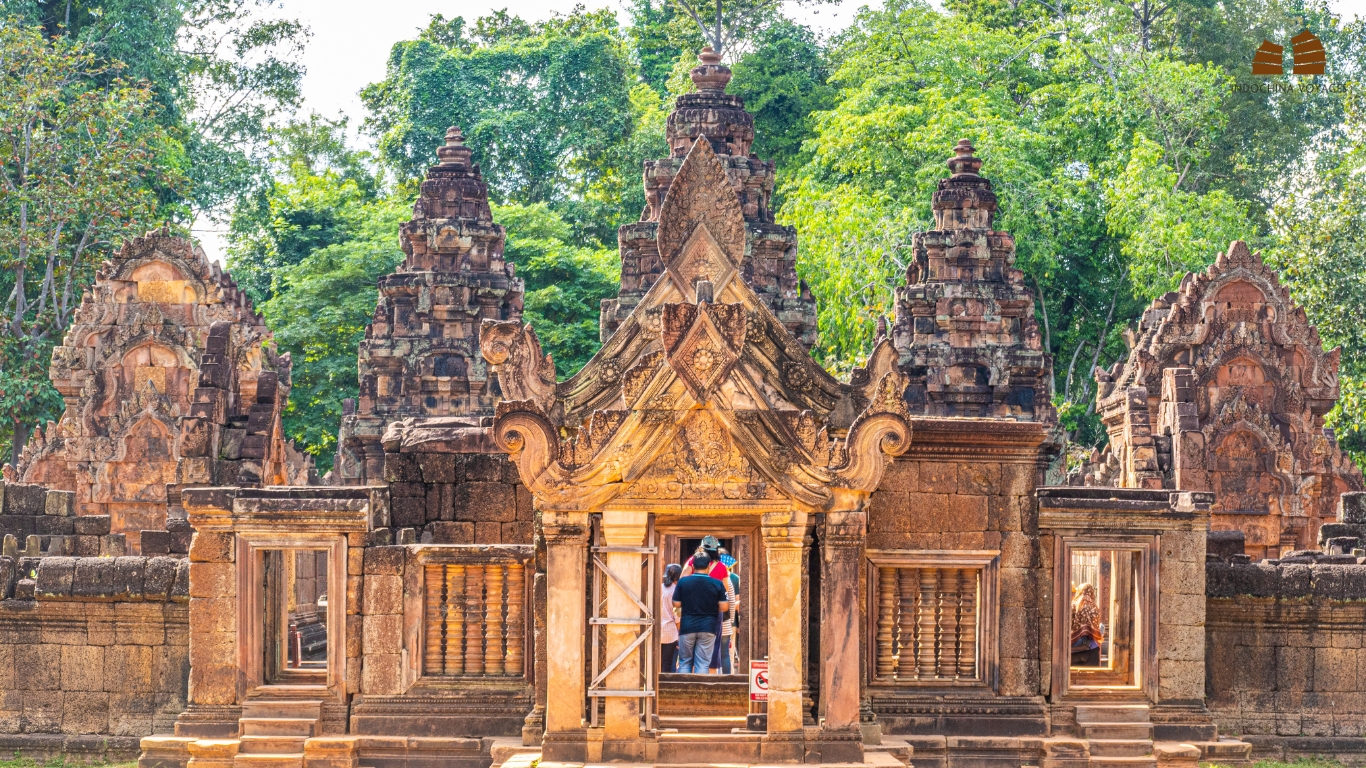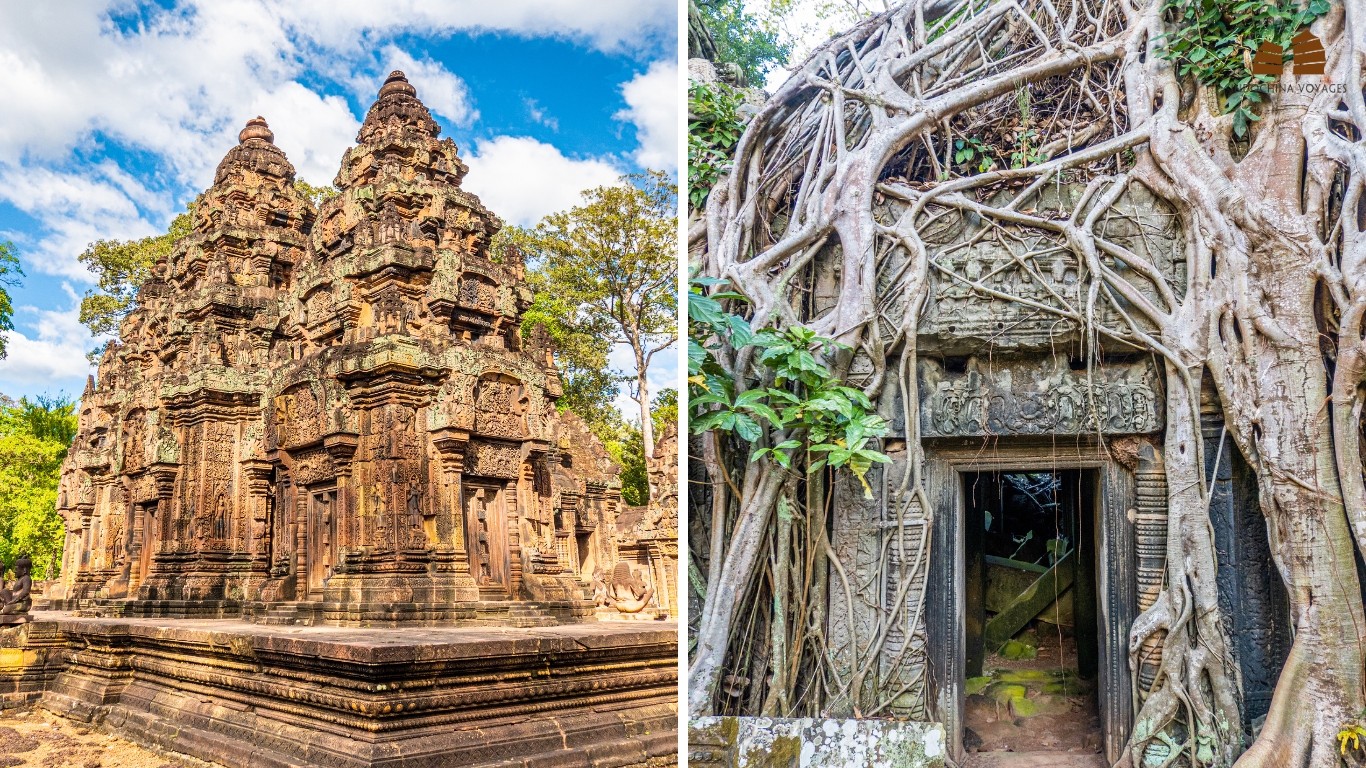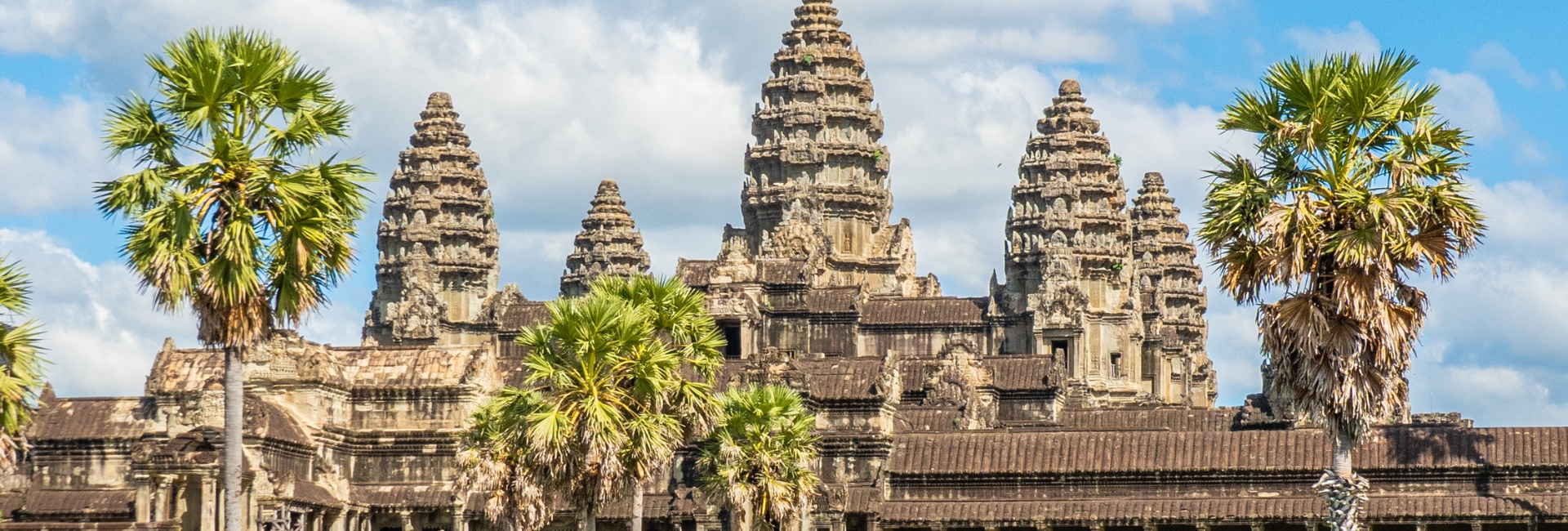Located around 7km from Siem Reap City Centre, Angkor Wat stands as a testament to Cambodia’s rich cultural heritage, drawing millions of visitors each year to marvel at their architectural splendor. As the world’s largest religious monument and a UNESCO World Heritage site, planning your visit requires careful consideration. This comprehensive guide will walk you through everything you need to know to make your Angkor adventure unforgettable.
Angkor History

The story of Angkor Wat begins in the early 12th century under the vision of King Suryavarman II. What started as a Hindu temple dedicated to Vishnu transformed over centuries into a Buddhist sanctuary that continues to captivate visitors today. The temple’s construction, spanning three decades, represents the pinnacle of Khmer architectural achievement.
At its heart, Angkor Wat is a miniature universe carved in stone. The central tower reaches skyward as Mount Meru, the mythical home of Hindu gods, while the surrounding moats mirror the cosmic oceans. After the capital’s relocation to Phnom Penh in 1432, Buddhist monks became the temple’s faithful guardians, preserving its intricate carvings and spiritual significance for future generations.
How to Get to Angkor Wat Cambodia?
Angkor Wat Temple is in Siem Reap, so the fastest and also the biggest key point is you have to base in Siem Reap before wanting to visit in depth this Heritage of the World.
To base in Siem Reap, there are 2 main ways whenever you want to come from any others destination:
By Air: Siem Reap International Airport welcomes flights from major Asian cities, making it the most convenient entry point. From the airport, a 20-minute taxi ride takes you to the city center.
By Land: Regular buses connect Siem Reap with Phnom Penh (6 hours) and Bangkok (8 hours). For a more scenic route, consider the boat journey from Phnom Penh across Tonle Sap Lake.
Once you arrive in Siem Reap, you can choose between these transportations below to get to Angkor Wat:
- Tuk-tuk: The most popular choice, costing $15-20 for a full day of temple exploration
- Private car: More comfortable with air conditioning, $25-35 daily
- Bicycle: An eco-friendly option at $5-10 per day, best during cooler months
- Organized tours: Various price points, including guide services

>> Maybe you want to read more if depart from Phnom Penh: How to Get from Phnom Penh to Siem Reap? – A Complete Transfer Guide for Travelers
>> For who those depart from Bangkok: How to get from Bangkok to Siem Reap: A to Z Border Crossing Guide
Best Time to Visit
The timing of your visit can significantly impact your experience at Angkor Wat. The weather in Cambodia follows distinct seasonal patterns that affect both comfort and crowd levels:
- Peak Season (November to March): Cool and dry, ideal weather but crowded
- Shoulder Season (April-May, September-October): Hot but fewer crowds
- Rainy Season (June to August): Lush landscapes, dramatic skies, fewer tourists
Moreover, for “golden hours” to admire the magical moments of Angkor Wat, you can visit this giant temple during sunrise and sunset. For sunrise, arrive by 5:00 AM to secure a prime viewing spot near the reflection pools. The sun’s first light creates a breathtaking silhouette of the temples against the dawn sky. For sunset, head to either Phnom Bakheng or Pre Rup temple about two hours before sunset. These elevated positions offer panoramic views as the day’s final rays bathe the ancient stones in golden light.
Is Worth for Me to Visit Angkor Wat?
The resounding answer is yes. Angkor Wat offers an experience that transcends typical tourism. The sheer scale of the complex, spanning over 400 square kilometers, contains more than just temples – it’s an entire ancient city waiting to be explored.
The main temple of Angkor Wat itself stands as the world’s largest religious monument, but it’s the details that truly captivate visitors. Intricate bas-reliefs wrap around the walls, telling stories from Hindu epics. The precision of ancient Khmer architecture reveals itself in perfect symmetry and astronomical alignments.

Beyond the main temple, you’ll discover:
- Ta Prohm, where massive tree roots embrace ancient stones
- Bayon Temple, famous for its enigmatic carved faces
- Angkor Thom, the last capital of the Khmer Empire
- Countless smaller temples, each with unique architectural features
The site offers something for everyone – photographers chase perfect lighting conditions, history enthusiasts decode ancient stories, and spiritual seekers find quiet corners for contemplation.
Angkor Wat Hot Air Balloon – Best Way for Panoramic View
Seeing Angkor Wat from above adds another dimension to your visit. Hot air balloon rides operate daily (weather permitting) and offer breathtaking aerial views of the entire archaeological park. A 30-minute flight costs between $115-130 per person and provides unparalleled photo opportunities.
The experience is particularly stunning during early morning or late afternoon flights when the light is soft and the temples cast long shadows across the landscape. Advance booking is essential, especially during peak season, and flights may be cancelled during adverse weather conditions.
Before you go
Here are some helpful information for to prepare when visiting Angkor Wat:
Opening Hours:
Most temples welcome visitors from 7:30 AM to 5:30 PM. Angkor Wat opens earlier for sunrise viewing, while Phnom Bakheng and Pre Rup extend hours until 7 PM for sunset views.
Tickets and Admission:
The Angkor Enterprise manages all temple passes. Current prices are:
- USD $37 for one day
- USD $62 for three days
- USD $72 for seven days.
Purchase your tickets at the official office, which opens at 5 AM, or through the online portal. Multi-day passes offer better value and a more relaxed exploration pace.
Essential Preparation Tips:
- Respect the sacred nature of the temples by covering shoulders and knees.
- Wear light, breathable fabrics and comfortable walking shoes.
- A hat and sunglasses are essential, as is sunscreen.
Safety and Well-being:
- Carry plenty of water – the tropical climate demands constant hydration
- Bring small denominations of US dollars for purchases
- Use only licensed guides, identifiable by their official badges
- Keep valuables secure and watch your step on ancient stairs
Family Considerations:
While children over 6 generally enjoy exploring the temples, plan your visit thoughtfully. Morning hours offer cooler temperatures and fresher minds. Consider hiring a guide who can bring historical stories to life for young visitors. Regular breaks and snacks help maintain energy levels.
Visiting Angkor Wat is more than just touring ancient temples – it’s a journey through time that leaves an indelible mark on every traveler. With proper planning and reasonable expectations, your visit to this architectural marvel will become a treasured memory of Cambodia’s magnificent heritage.
>> Coming to Siem Reap but finding experiences beyond the Angkor Complex? Read more: 15 Things to do in Siem Reap – Beside visiting Angkor Wat
Thuy Dang – From Indochina Voyages Team








